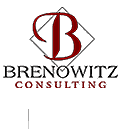


|
Issue # 7 - Organization Design - Part 2 In this issue, you will find 1. A discussion of Structure and Process as elements in organization design 3. Pointers to additional information on this topic _____________________________________________ 1. STRUCTURE AND PROCESSES: THE RECIPROCALS OF ORGANIZATION DESIGN One of the fundamental concepts underlying Organization Design is Differentiation and Integration (D/I). Differentiation refers to determining what the basic units of the organization will be--what needs to be separate and distinct, based on the required functions or focuses of the organization. Integration refers to how to get the differentiated parts to "play" together, i.e. how to ensure that the parts of the organization can interact to provide the necessary coordinated outputs. In large, complex, highly interdependent organizations, it is especially important to pay attention to the balance between the two in order to enable the required collaboration. Therefore, when designing an organization, each time a differentiation step is taken, consideration must be given to a corresponding integration step: it is the Structure of the organization that creates differentiation, and the Processes that enable integration. STRUCTURE defines how the organization's resources are to be grouped and held. It also specifies reporting relationships; layers or levels of management; the placement of power and authority; work design; and the relationship of functions, groups, operations, and tasks to each other and to various stakeholders. The dimensions around which organizations are most typically differentiated or structured are: products, markets and/or customers, functions, and geography. Because of the multiple demands and market conditions that organizations face, structures are often created that address more than one dimension. For example, matrixed organizations combine elements of product/customer and functional dimensions are employees work simultaneously for two bosses. Business Units focus attention on a particular market or line of business, giving it the resources that are required for it to operate essentially as a separate entity (though it may share the services of some centralized or common functions, e.g. finance, human resources, facilities, legal, etc.) Structures are also said to be hierarchical or flat. This refers to the number of layers or levels of managers and their respective groups and the distribution of power and authority within the organization. Thus, a steep hierarchy would have many layers with the power and authority concentrated at the top. A flat organization would have fewer layers of management, each with a larger span of control. Because a single manager can't direct all the activities or make all the decisions, more authority and power is given to work groups, teams, and individuals. This form of organization requires more integrating processes. PROCESSES enable organizations to perform well on the dimensions of speed, cost, quality, and innovation. They include both business processes (e.g., quality systems, order fulfillment, and financial reporting) and processes that enable human interaction or manage the interface between employees and the business, such as performance appraisal, problem solving and decision making, and information and communication. These processes enable the knowledge, skills, and abilities of many-people, groups, functions, organization-to be brought to bear on problems, opportunities, and outcomes that are complex and/or require the expertise of multiple specialties for resolution. Processes are also either vertical or lateral. Vertical processes manage the allocation of scarce resources. Lateral or horizontal processes manage coordination across the steps in a continuous or interdependent work process that spans departments, functions, and/or organizations. In order to design an organization that functions effectively, the Structure and the Processes must be considered and developed concurrently and interactively. A common error in organization design is thinking that the Structure is all there is, so the "lines and boxes" are redrawn, but little or no attention is paid to the processes that define, focus, and enable the required integration, coordination, and collaboration among the differentiated entities. But just as the Structure won't work without corresponding integrative processes to support it, there are Structural design alternatives that will increase the likelihood that people will be able to work together more collaboratively and interdependently. When undertaking a design effort, we encourage our clients to do a thorough and detailed analysis of interdependencies before finalizing a structure. The Structure and the Processes can then be designed in relationship with each other against a set of overall design criteria. ____________________________________________________ 2. Designing Organizations: An Executive Briefing on Strategy, Structure, and Process by Jay R. Galbraith. (Jossey-Bass Publishers, 1995) Leaders of modern organizations are becoming increasingly involved in organization design: first, to create knowledge-based organizations, and second, to create effective, rapid responses to powerful customers. Designing Organizations is a leader's concise guide to the creating and managing of an organization. It focuses primarily on the structure and process sections of the Star Model (discussed previously). Galbraith examines the forces that are shaping today's organizations-buyer power, variety, speed, and change-and how they affect organization design. As a result of buyer power, more organizational structures are being designed around market segments or specific customers. Variety forces management to bring more people into the decision processes, primarily through decentralization. Change requires that companies make more decisions more frequently, and thus to expand their decision-making capacity. Speed requires that decisions be moved to points of direct contact with the work, to meet shorter lead times. In the section Choosing an Effective Design, Galbraith introduces the concepts of Structure and Process. The structure of the organization determines the placement of power and authority. Structure policies fall into four areas: 1. SPECIALIZATION: the type and number of job specialties used in performing the work; 2. SHAPE: the number of people constituting the departments; 3. DISTRIBUTION OF POWER: the classic issues of centralization and decentralization, and the more modern concept of movement of power to the departments; 4. DEPARTMENTALIZATION: the basis for forming departments at each level of the structure. The standard dimensions on which departments are formed are functions, products, workflow processes, markets, and geography. Information and decision processes cut across the organization's structure. Management processes are both vertical and horizontal: 1. VERTICAL PROCESSES allocate the resources of funds and talent. They are usually business planning and budgeting processes. The needs of different departments are centrally collected, and priorities are decided for the budgeting and allocation of the resources to capital, research and development, training, etc. 2. HORIZONTAL PROCESSES (also known as Lateral Processes) are designed around the workflow (e.g., new product development or customer order fulfillment). These processes are becoming the primary vehicle for managing in today's organizations. Lateral processes can be carried out in a range of ways, from voluntary contacts between employees to complex and formally chartered teams. Designing Organizations offers us both time-tested knowledge and current innovative trends. It is intended to provide a contrast to the oversell that often accompanies popular ideas. Sometimes the hype diminishes the usefulness of new ideas by turning them into fads. This book portrays new ideas as useful tools that should be understood by every leader and consultant to be kept in every their toolboxes and taken out only when appropriate. Where the book falls short, however, is in the implementation of the tools introduced. Over and over again, I found myself wishing that Galbraith would say more about how to use the concepts and how to integrate them into an already existing organization and culture. _________________________________________________ 3. Websites and Other Resources we've found about this topic include: *
The Association for the Management of Organization Design www.amod2000.org
READINGS:
This is a research-based, how-to book on designing an organization in which teams are the fundamental units of performance. It presents a systemic rather than an occasional approach to teams as an alternative to hierarchies as a form of organization structure. Also available as companions to this book are: Designing and leading team-based organizations: A workbook for organizational self-design Designing and leading tram-based organizations: A leaders/facilitator's guide Lawler, E.E. The ultimate advantage: Creating the high-involvement organization. (1992). San Francisco: Jossey-Bass Publishers. This book, particularly Part Two, looks at designing a structure for employee involvement in organizations, which Lawler views as a source of competitive advantage for organizations. Davis, S. and Lawrence, P. Matrix. (1977). Reading, Massachusetts: Addison-Wesley Publishers. This book is the classic on matrixed structures. It provides guidelines and tools for the development of matrix organizations which Davis and Lawrence believe is the viable answer to the age-old centralization vs. decentralization question.
|
||||||||
|
||||||||